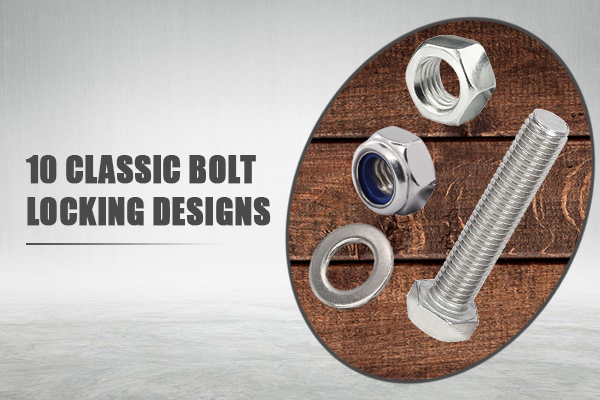VIDEO & CENTER

Once the bolt connection in mechanical equipment is lax, it will cause the bolt to fall off and lead to major safety hazards, or the bolt slack preload will decrease, resulting in the fatigue life of the bolt connection is greatly shortened. Therefore, appropriate anti-loosening measures should be selected in the design to ensure that the bolts are not loose in actual use.

The commonly used anti-loosening measures in the design are as follows:
- Double nuts
Double nut locking is also called the top nut locking, when the two top nuts are tightened, there is always interaction pressure between the two top nuts, and any one of the two nuts needs to overcome the friction between the screw threads to rotate. Even if the external load changes, the pressure between the top nuts is always present, so it can play a relaxing role.
- Self-locking nut
The self-locking nut generally relies on friction, and its principle is to press into the preset hole of the sheet metal through the embossed teeth, and the aperture of the general square preset hole is slightly less than that of the riveted nut. The nut is connected to the locking mechanism. When the nut is tightened, the locking mechanism locks the bolt thread.
3, thread locking adhesive
Thread locking adhesive is a adhesive composed of (methyl) acrylate, initiator, promoter, stabilizer (inhibitor), dye and filler, etc., which are combined together in a certain proportion.
- Cotter pin
After the nut is tightened, insert the cotter pin into the nut slot and the bolt tail hole, and open the cotter pin tail to prevent the relative rotation of the nut and bolt
- Slotted nuts
Slotted nuts are used with threaded bolts and cotter pins to prevent the bolt from rotating relative to the nut.
6, series steel wire anti-loose
The series steel wire anti-loosening is to Pierce the steel wire into the hole of the bolt head, connect the bolts in series, and play the role of containing each other. This kind of anti-loosening method is very reliable, but it is more troublesome to disassemble.
- Pre-tighten
High-strength bolt connection is generally not required to apply additional anti-loosening measures, because high-strength bolts generally require the application of a relatively large pre-tightening force, such a large pre-tightening force produces a strong pressure between the nut and the connected part, this pressure will produce friction torque to prevent the nut from rotating, so the nut will not loose.
- Stop gasket
After the nut is tightened, bend the single-ear or double-ear stop washer to the side of the nut and the connector respectively and tighten it to lock the nut. If the two bolts need to be double interlocked, a double brake washer can be used to brake the two nuts against each other.
9, spring washer
10, double stack self-locking washer














